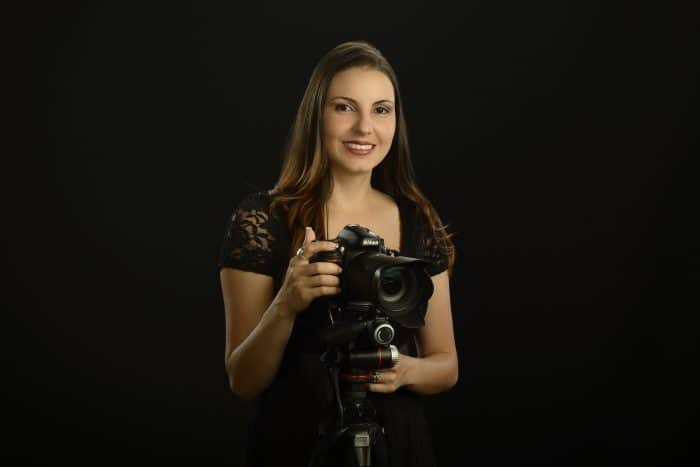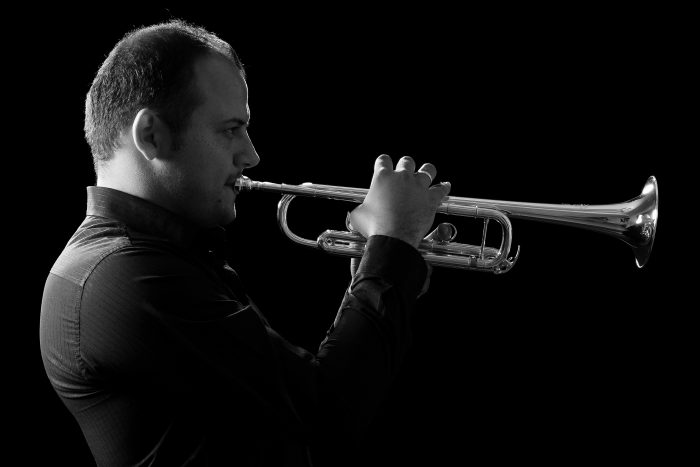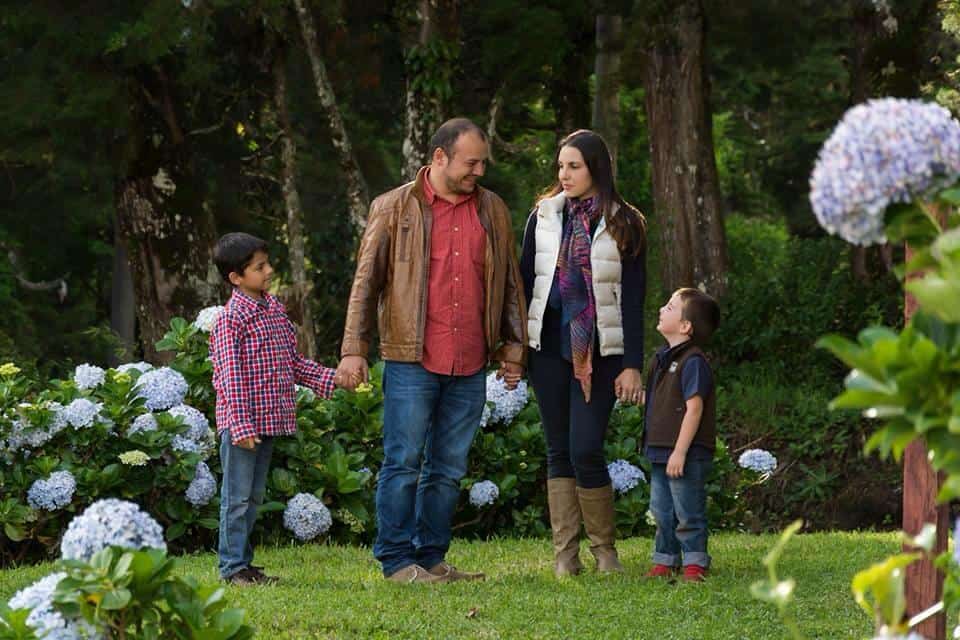Costa Rican musician Alexis Morales, 30, and photographer Ginette Venegas, 30, have merged their disciplines – and their lives – for the past 12 years. This couple from Grecia, Alajuela, have balanced their work, family and studies over time.
Morales began to play the trumpet by mistake: he grabbed a trumpet at school so he could place some Play-Doh in it as a joke, but the instrument ended up sparking his interest in music and leading to one of his greatest passions. He went on to study music at the University of Costa Rica (UCR) and the O. Vecchi-A Tonelli Conservatory in Modena, Italy, and has performed with the National Symphonic Orchestra, the Heredia Symphonic Orchestra, the UCR Professional Orchestra, the San José Concert Band and the Metropolitan Ensemble.
As for Venegas, she first studied geology at the UCR and then transferred to the University College of Alajuela (CUNA) to study administration and water resource management. However, none of those careers were her true passion, so she then decided to transfer to photography at the National Technical University (UTN). Both her father and brother had always taken photographs, and she now works with them at their studio Foto Fantasías in Grecia.
The Tico Times caught up with Morales and Venegas via Skype to talk about their lives and work. Excerpts follow.
Why did you choose music and photography?
AM: For me it was very difficult to make the decision to dedicate my life to music. In my family there were no musicians and there’s no one close to the arts. I was up against many stereotypes… Besides that, I was in a high school where they told us to study traditional careers such as law, economics or business, and when I decided to study music, two of my teachers spoke with my parents to make them convince me not to study music, but I loved it. There was nothing else that fulfilled me as much. It had become a lifestyle. There was a moment in which I had no doubt about dedicating my life to it. It was difficult at the time, but it got better.
GV: Photography was a path that matured through time. Since I had always worked at the studio helping my brother and my father, I had certain knowledge about it. I had quite a bit of visual education, but always ran away from the idea of taking photographs, working with people and the relationship of the person portrayed and photographer. That part was very complicated for me because I’m a shy person… but then I bought a breach camera because our second son was going to be born. I wanted to have a camera to photograph the most special and important moments. I loved the visual communication, and fell in love with the career.

Which are your processes to practice a musical composition and capture a photograph?
AM: If there’s a recording of the composition, I first sit down to read the sheet music and listen to the recording to begin recognizing and developing an auditory relationship with the piece… I like to identify which are the most complex or demanding passages in order to work on those first in the slowest manner possible and start constructing it note by note. Afterwards I start playing from beginning to end while using a metronome and a tuner, and work the tones and dynamics.
If there are no recordings of the composition, I sit down and speak with the composer to see what the piece is about, what he or she wants to convey, what the piece means to him or her and what speeds or tones it has.
GV: For me the process depends on the type of photograph being taken, whether it is a social portrait, product photography or landscape photography. All of them are different. When it’s a product photograph you’ve got to check the colors to be used, choose the background and the make up in case it requires. Those photographs are very slow because it can take a whole morning or afternoon depending on which type of product it is. When the photographs are portraits they are done faster. You’ve got to speak with the person and get to know them a little bit. The lights have to be set up in order for us to try to communicate who the person is and what they like. Regarding the editing process, generally we edit the skin and details. You probably take half an hour taking the photographs and a few hours with post-production. Lastly, when you photograph landscapes, you can’t intervene with artificial illumination, so you’ve got to wait for that moment in which the magic light comes in, during the morning or the afternoon.
What do you most enjoy in your work?
AM: Definitely the stage… when you’ve got the reflectors, lights, people and adrenaline. That’s why it’s worth it, why you love it and decided to become a musician. It’s many hours spent in a cubicle studying, and very few hours on stage compared to the preparation process. The stage hours are the ones that fulfill you, your soul, your heart, and your professional and artistic career. Those hours are the ones that allow you to grow up.
GV: What I most enjoy about photography is being able to freeze unique moments that can’t be repeated even if you try to set up everything. I love the idea of being able to communicate feelings and sensations, or being able to generate those feelings in the person who’s seeing the photograph.

How do you express yourselves through your respective media?
GV: As a photographer I work as a visual communicator. It all depends on what you want to communicate and what media, objects or signs are used… On an artistic level, photography is a way in which I express my feelings.
AM: With music you have the possibility of allowing people to go on an emotional journey. You’re able to make people identify through melodies with what has happened throughout their lives, and with emotions such as nostalgia, happiness, sadness or anger. I believe that’s the purpose of creating music: taking people and transporting them through memories. Transporting them to a place. Giving them sensations. Giving them moments and feelings that they don’t have in their daily lives. There’s also the importance of listening to the artist playing live while creating art in that moment.
How have your professions complemente each other?
AM: I’ve learned a lot from her. Ginette has every detail covered and figured out. I usually improvise, solve things in the moment and am taken by surprise. She doesn’t do that, so I’ve learned… to have a general and specific panorama of what can happen.
She’s also the one who has created the images for my music career. She has taken my photographs and covered my concerts. Many of the commercial things that have happened to me have been due to my image; I’m very thankful for that. Our lives are usually very chaotic, so we try to control it because we have two sons, we’re studying, we work a lot and try to work out our relationship. We’ve learned to live with each other and be happy.
GV: From Alexis I’ve learned to be more disciplined with photography. I try to learn from the discipline he shows in practicing so many hours every day; I must be aware of the new tendencies and changes in photography, to stay up-to-date with what’s going on globally. Thanks to the fact that we both have a professionally chaotic life we can understand, support and motivate each other to keep going.
Our “Weekend Arts Spotlight” presents Sunday interviews with artists who are from, working in, or inspired by Costa Rica, ranging from writers and actors to dancers and musicians. Do you know of an artist we should consider, whether a long-time favorite or an up-and-comer? Email us at kstanley@ticotimes.net.

